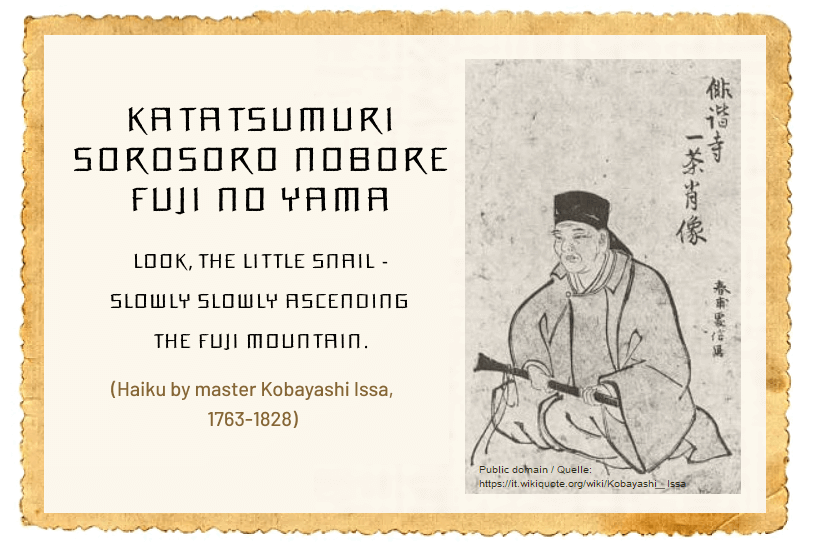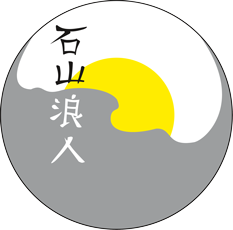(… or: My Own Ways Of Reasoning)
Haiku and Tanka are genuine Japanese forms of poetry.
- The Haiku demands a text consisiting of 17 “on” (i.e. sound, tune, comparable at the best with our – spoken – syllable), with an exactly determined distribution of 5-7-5 over three lines.
- The Tanka is completed by two more lines with 7 “on” each.
Languages respecting written syllables in case of hyphenation, but omitting them in (prosaic) pronunciation, e.g. exceedingly French, dispose of more flexible facilities than e.g. the English language.
According to a narrow “classical” perspective, e.g. of Matsuo Basho, the content of Haiku is focused on pure nature contemplation and expression of meditative disengagement. The items of this compilation take aim at any topic which impose reflection and discussion (ergo, exactly speaking, “senryu”). The stimulus to follow strictly this formal specification is caused by the challenge to fix thaughts in such narrow stays, what Japanese as well as Europeans can accomplish only by means of a sophisticated language “juggling”. Here and there the result is a “handy-sized” and precision-demanding manner of communication, which nonetheless presupposes a highly efficient use of the space “between the lines”.
Example for a Haiku masterpiece by Kobayashi Issa

The making of poetry orientated on Japanese form tradition is en vogue in the Western world for a fairly long time. In the early Tanka of this compilation, initialized by an almost marginal mention by Miyamoto Musashi at the beginning of his “gorin no sho” (Book of Five Rings), there was originally kept in mind only the total number of syllables (31). In January and February 2015 all older Tanka were transposed into the due line order (5-7-5-7-7). In such cases two date resp. time indications are evident. As a matter of pleasant surprise, this transposing from the – formally erroneous – original release proved to provide benefit for expression in content as well as in style.
Example for a Haiku:
Returned from the top,
Downslope wind’s incessant stream
Shakes the window blinds.
(August 2010)

Example for a Tanka:
The vertex well reached
In the brilliant summit sun
View turns all around –
Exciting expectance for
What the bottom will provide.
(February 2018)
In the present case, the proprietary motivation to conserve thoughts exactly in the form just explained arised and still increases with the purpose to already “reflect in this manner” what is scheduled to be conserved. In this respect, looking back from the finished object, no item which finally cannot be set into order with this conciseness can claim here to be fixed and sent out into space and time.
(Ishisan 2022)
